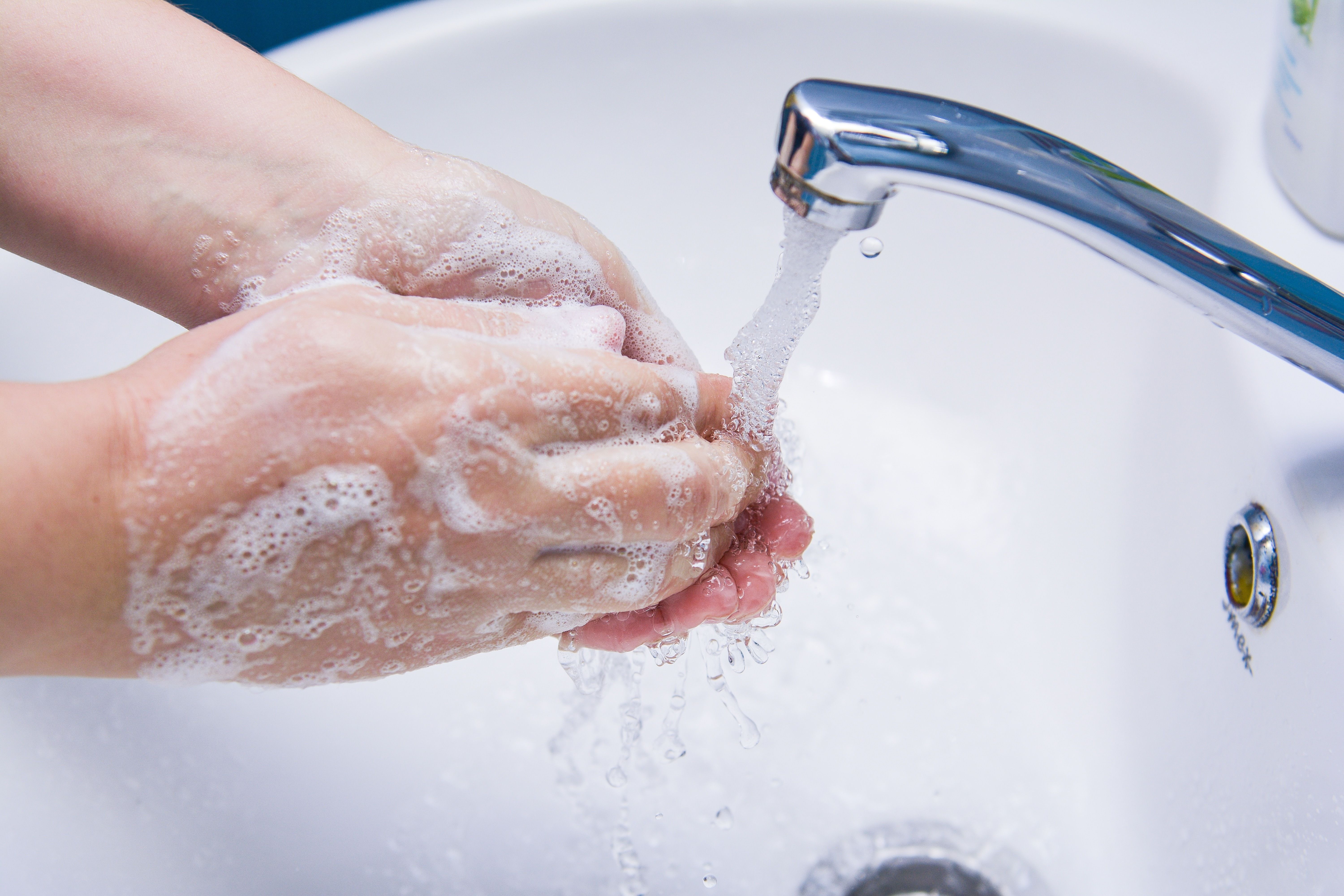
(Vienna 13 October 2017) Every year, on 15 October, the World Health Organization WHO reminds us how easy it is to avoid the spread of harmful germs by washing our hands regularly. Especially during cold weather, scrupulous hand hygiene offers effective protection against the influenza virus, for example. Florian Thalhammer from the Clinical Department of Infectious Diseases and Tropical Medicine at MedUni Vienna therefore advises us to wash our hands thoroughly with soap for at least 20 seconds. A video produced by MedUni Vienna now shows you how to wash your hands effectively and correctly in five easy steps.
Too many people still have a reckless disregard for the risk of contracting a serious illness as a result of inadequate hygiene. Although it is impossible to avoid contact with bacteria and viruses completely, it is possible to reduce it substantially.
In our everyday lives, are hands are constantly coming in contact with germs, whether on door handles, light switches, hand grips on underground trains or objects that have been touched by a lot of people. Flu viruses, for example, can survive on surfaces for around 48 hours. Problems arise when the pathogens are then transferred from the hands to the mucous membranes. Florian Thalhammer, infectiologist and doctor of internal medicine at MedUni Vienna, estimates that up to 80% of all infectious diseases are transmitted via the hands: "Good examples of this are colds and flu. Handwashing massively reduces the risk, because it can reduce the germ count by more than 99%." For example, the rhinovirus count can be 65% on the hands, 50% in nasal secretions and 39% in saliva.
It takes 20 to 30 seconds to wash your hands properly
Ideally you should wash your hands regularly: when you arrive home, before cooking and eating and, of course, after going to the toilet. A quick rinse of the hands is not enough to minimise germs. Says Thalhammer: "You should hold them under running water and then rub the soap thoroughly into the palms, backs of the hands, fingertips and spaces between the fingers, as well as the fingernails. It takes 20 to 30 seconds to clean hands that are not very dirty. In order to remove the resident skin flora, which is important for hand hygiene in a hospital, it is necessary to wash your hands with soap and water for three minutes." People who are already ill should wash their hands even more frequently, so that they do not infect other people.
Soap is part of the process, because it reduces the surface tension of water, thereby improving contact with dirt particles. Commercial antibacterial soaps are unnecessary, because they are no better at removing germs than normal soaps. As regards liquid soaps, Thalhammer advises: "The protective acid mantle on our skin represents a natural barrier to pathogens so it is preferable to use soaps that are pH neutral. Liquid soaps are more hygienic than traditional bars of soap." And, by the way, the temperature of the water does not matter. However, it is a good idea to dry wet hands thoroughly, because germs can survive more easily in a damp environment. You should use your own towel for this or a disposable paper towel that you do not share with anyone else.
Disinfectants cannot replace handwashing
Although domestic disinfectants are able to reduce the number of germs, they are no substitute for washing your hands. Says Thalhammer: "Using disinfectants makes sense if members of the family are suffering from a highly contagious infection or a disease associated with lowered immunity, e.g. following cancer treatment. However, remember that disinfectants should only be applied to and rubbed into dry skin. If they are applied to wet hands, they immediately lose their disinfecting action." It is a different matter when you visit the doctor or are in a hospital. Here you should always use the disinfectant dispensers provided.